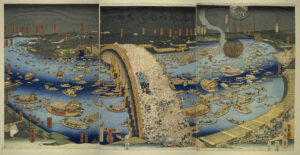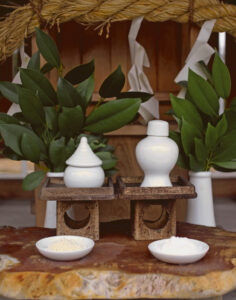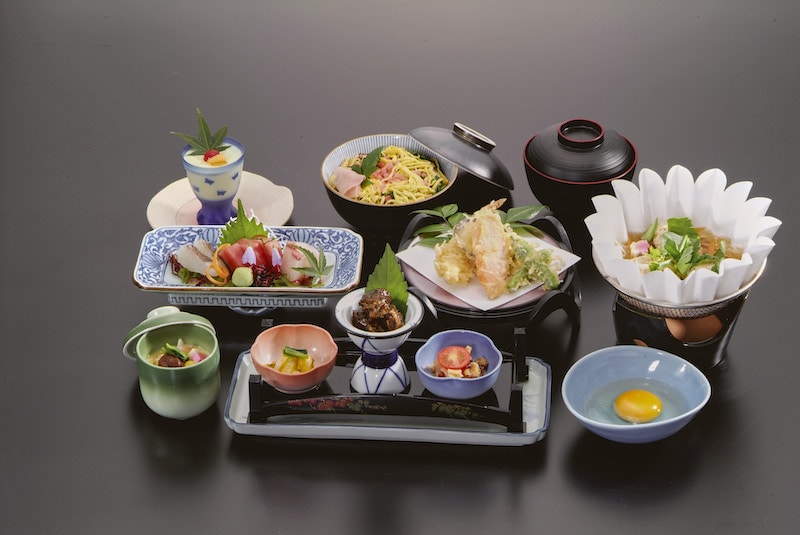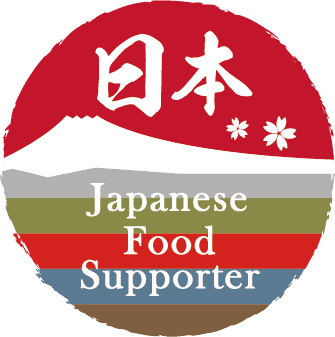Kaiseki 会席
Germans eat with their noses, the Japanese with their eyes - anyone who has ever encountered kaiseki (会席) will believe this immediately. It looks tempting when the colors of the different foods glow around the bet. Edible flowers and leaves accompany the dishes, which are aesthetically arranged on carefully selected tableware. This typical cuisine from Japan is a delight - for all the senses. The elaborately arranged dishes are aligned with the seasons, and the tableware and food must harmonize thematically. If you want to get closer to Japanese aesthetics, you will find the culinary ambassador for this in Kaiseki. But what exactly is that anyway?
This article explains what kaiseki is and gives deep insight into Japanese culture. In our restaurant sansaro in Munich we organize occasional evenings where you can experience Kaiseki, more on the Events page
What is Kaiseki?
Kaiseki is a multi-layered menu of many small courses, carefully coordinated and handcrafted.
Kaiseki is the high form of Japanese cuisine and in a special way incorporates tableware, seasonality and regionality into a comprehensive culinary experience.
It is typically served in special restaurants (料亭, Ryōtei), traditional hostels (旅館, Ryokan) or simply on very special formal occasions.
The characters for the culinary kaiseki are composed of 会 (kai) meeting and 席 (seki) place.
Take a look at our Video on YouTube on the subject of Kaiseki!

By loading the video, you accept YouTube's privacy policy.
Learn more
Differentiation between Kaiseki and Cha-Kaiseki
Kaiseki is not "originally a light monk's meal", as you can read in various places on the Internet. This information is simply wrong!
The small, light meal that accompanies the tea ceremony is also written "kaiseki" in the Western transcription. However, the characters for garment and stone are used for this in Japanese (懐石).
To differentiate colloquially between these two different directions, for the part of the tea ceremony in German and Japanese can be called "Cha-Kaiseki", derived from "Cha" (茶), the Japanese name for tea. Cha-Kaiseki is therefore a small foundation for the stomach to enjoy a tea ceremony in style, as the name already suggests.
While cha-kaiseki is actually a reduced meal, "culinary" kaiseki is about a meal as an end in itself of enjoyment, which is ideally accompanied by the alcoholic beverage sake is accompanied.
Kaiseki und Cha-Kaiseki haben die gleichen Ursprünge in the Honzen-Ryori (本膳料理). Allerdings haben sie sich im Laufe der Jahrhunderte unterschiedlich entwickelt. Because the pronunciation is the same, the two species are usually equated outside Japan. However, this is not correct. Both kaiseki have to do with food and Japanese culture, but both have very different emphases and backgrounds.
So this is about an overview of the culinary style of the haute cuisine of Japan.
You can read more about this in our article about the History, origin and development of Kaiseki read up.
Kaiseki as a culinary expression of Japanese culture
Japan is known for the courteous treatment of guests, hospitality is a matter of course, the idea of "Omotenashi" permeates the fine culinary arts and Japanese culture.
High quality food, simply prepared and artfully arranged are the essence of the Japanese cuisine Washokuwhich is also oriented to the course of the seasons and regional peculiarities.
The origin
Kaiseki entstammt der Honzen-Ryori, welche luxuriöse Festmähler der Buke (武家, einer Samuraikaste) dargestellt hat. Im Vergleich zu Honzen-Ryōri war Kaiseki schon damals reduzierter, sparsamer, konzentrierter – man möchte sagen: fokussierter.
Nevertheless, this form of kaiseki cuisine was of course something special at that time, which was not accessible to large parts of the population.
This culinary kaiseki was - in contrast to Cha-Kaiseki - contrary to the frequently repeated statements in the German-language Internet, however never pure vegetarian.
Kaiseki is philosophy
Historically, kaiseki developed during the period when the basic features of the Japanese arts so well known today were developed: Zen Buddhism, the martial arts, the tea way, the way to draw a bow or paint a kanji: Everything is connected by a certain mindful, concentrated, often meditative-focused state of mind.
If we look at kaiseki today, we find ideas that can be found in other Japanese arts, such as the tea way. The individual dishes are scarce in quantity, unnecessary things have been omitted more and more over the centuries. Every detail, however, is produced and presented very consciously.
Thus, the totality of the many small courses results in a whole, luxurious meal. The art lies in the targeted reduction.
Kaiseki is the top class of Japanese cuisine
Kaiseki cuisine today can be considered the classic haute cuisine of Japanese culinary culture.
It's about using a high level of craftsmanship to refine the best seasonal and/or regional ingredients using different preparation techniques and presenting them like little art treasures.
The goal is not only that the guests get full. They should be entertained, educated by the variety of dishes and the expert efforts of the chef or cook. In the end, a feeling of comprehensive satisfaction remains.
Differenzierung Kaiseki und französische Haute Cuisine
Auch wenn die französische Haute Cuisine großen Einfluss auf die Küchen in aller Welt hat und als der Goldstandard für feine Küche angesehen wird: Kaiseki unterscheidet sich durchaus strukturell und vom Grundgedanken von der französischen Lehre.
Zusammengefasst könnte man sagen, dass Kaiseki subtiler ist, es mehr auf die Harmone des gesamten Mahls ankommt und insbesondere der wechsel zwischen den Speisen und der Ausklang am Ende anderen Rhythmen folgt.
Bei der französischen Küche hingegen geht das gesamte Mahl meistens in einer Steigerung der Aromen einem beeindruckenden Finale im Dessert entgegen. Mehr dazu in unserem Artikel zum Vergleich französische Haute Cuisine vs. japanisches, kulinarisches Kaiseki.
Where can you experience Kaiseki?
Kaiseki is now served both in the Ryōtei, the classic Japanese restaurant, and in the Ryokan, the traditional inn. In contrast, the tea ceremony with cha-kaiseki takes place in the teahouse, not in a restaurant.
In Europe, there are only a few excellent Japanese restaurants that offer this traditional cuisine.
However, not every Japanese restaurant that has "kaiseki" in its name is automatically a true specialist in this field. In fact, the preparation of a kaiseki menu is extremely time-consuming, as a large variety of basic ingredients must be prepared and processed manually.
A genuine kaiseki menu thus places particularly high demands on the kitchen and is usually only found in very expensive, specialized restaurants and on festive occasions - or in specialized restaurants in Japan.
A proper kaiseki menu requires special knowledge on the part of the chef and extensive preparation by the entire restaurant team. It therefore cannot be offered "on the side" as an option on an otherwise normal restaurant evening or a restaurant that does not specialize in it.
Special Experiences: Ryotei and Kappo
Japanese culture attaches great importance to eating together. Accordingly, the range of different restaurants is diverse. Two establishments are mentioned again and again when it comes to kaiseki: Ryōtei and Kappo. What are they?
Ryōtei are restaurants that look like traditional Japanese homes from the outside. The rooms are covered with tatami, and meals are served on low tables.
Not everyone gets access to the Ryōtei; you usually have to be invited by a regular. These are high-class restaurants where discreet meetings often take place - so it's not just about the culinary delights.
Furthermore, kaiseki is sometimes offered in hotels and ryokan as well as special restaurants, where the chef is particularly deeply trained and has mastered the traditional Japanese art of cooking. Such hotels and restaurants can be found not only in Japan, but also in Europe.
"Kappo" is not a special type of restaurant, but a culinary philosophy: serving what is seasonally and locally available. This coincides with the philosophy of Kaiseki.
Sushi not an automatic component of Kaiseki
Sushi ist übrigens kein automatischer Bestandteil eines Kaiseki-Menüs.
Sushi ist zwar weltweit quasi zum Synonym für die japanische Küche geworden. In Japan ist Sushi jedoch nur eine unter vielen kulinarischen Traditionen.
Sushi can be part of a kaiseki menu, but it doesn't have to be. And it is always worthwhile to discover Japanese cuisine apart from sushi, especially since each area has its own specialists.
Sashimi typical component of kaiseki
Sashimi on the other hand, is more often part of a kaiseki menu: The fine slices of raw fish don't necessarily have to be on the ball or block of leavened rice that is typical of sushi. Sashimi is really only the fish that has been cut by means of special cutting techniques is brought to its best flavor, while sushi always means an assemblage with rice (and other ingredients, if necessary).
Where can I find Kaiseki in Germany?
Kaiseki was already available in Germany 30 years ago at the Hotel Nikko in Düsseldorf. At that time, the hotel restaurant "Benkay" was somewhat larger and offered authentic Kaiseki, today the restaurant is downsized and offers (to our knowledge) the generally somewhat simpler show cuisine Teppanyaki.
According to our remote assessment, as of April 2022 there are in Germany very few restaurants that offer kaiseki:
- Nihonryori KEN 日本料理 謙 in Frankfurt (not the first restaurant in Germany to offer Kaiseki, but at least currently one of the few)
- Shiori Berlin
- The Restaurant Ichi in Kiel offers kaiseki menus that we haven't tried yet, but judging by our expertise from afar, seem to be prepared to a high standard, beautifully arranged and well balanced. Try it!
- Our Restaurant sansaro within the framework of special, unique Events. You can always find out when these take place in the newsletter or on social media, preferably follow us there.
We have not yet visited all of them personally, but will report on them if we have. If there are any other restaurants in Germany that actually offer Japanese Kaiseki, please write us.
Otherwise, be careful: Just because a restaurant has "Kaiseki" or "Washoku" in its name does not mean that they cook or think accordingly!
Genuine kaiseki is also strictly formalized, so that (experienced) Japanese can quickly tell from a menu whether kaiseki is actually being served or just a multi-course meal, which is loosely based on kaiseki and simply uses the term "kaiseki" as a label. This also works well because for many Germans, kaiseki resonates with "imperial" in meaning and phonetics.
Kaiseki in Munich
In our restaurant sansaro in Munich's Amalienpassage we serve sushi & fine Japanese cuisine in authentic quality since 2007.
For the first time in 2022, we approached kaiseki with great humility and our typical attention to detail. We offered seasonal kaiseki evenings on specific, set dates and guests were kind enough to acknowledge our efforts with very appreciative feedback. On our homepage you will find reports about the Kaiseki Eventsthat we have been able to offer so far in Munich and possible new dates.
If you are interested in such evenings, we recommend that they subscribe to the newsletter - there you will be the first to know when there is another Kaiseki event from us in Munich.
Im Jahr 2024 ist unsere Begeisterung für die saisonale japanische Küche in einer Regelmässigkeit übergegangen: wir bieten jetzt immer wieder wechselnde saisonale japanische Menüs an, die sich auch immer wieder lose am Kaiseki orientieren. Achten Sie auf die „Reise nach Japan“, wenn Sie reservieren!
A little bit of everything, but not too much
Kaiseki consists of a fixed sequence of many small courses.
There is no set rule as to how many individual courses a kaiseki menu must include, but it is usually around seven courses, definitely an odd number of courses.
These individual small dishes are always fresh and therefore prepared from changing seasonal ingredients, the order and type of dishes follow a set protocol.
Sometimes two courses can be served within a course sequence - anyway, on some occasions or in some settings all dishes are served together, for example in the traditional Japanese hostel ryokan, where you don't want to disturb the guest in his room all the time.
Menu with several, fixed courses
Here are just a few examples of different possible courses at the Kaiseki,
without any claim to completeness or explanation of the complex rules:
- Shokuzen-shu: The menu is started with an appetizer, usually sweet wine or a local specialty. Originally, appetizers were not part of a kaiseki menu; it was not until the 1980s that appetizers began to be offered in Japan.
- Sakizuke: This appetizer is served at the beginning. Sakizuke is a small bite that the guest enjoys in one or two bites - no more.
- Wanmono (椀物): This is a clear soup.
- Hassun: Hassun is an elongated plate. Bite-sized, beautifully arranged appetizers are served on this plate. Here, the choice of food, decoration and tableware already illustrates the theme of kaiseki. Hassun can be served at various points in the menu sequence. However, hassun never forms the beginning of the menu.
- Mukozuke: Next comes a course of raw fish. Sashimi is seasonal and the seafood is cut into fine slices.
- Futamono or Kimono: Sashimi may now be followed by a dish prepared using the Takawase cooking method. These are usually individual vegetables that have been gently simmered together with a protein food (such as fish, meat or tofu).
- Yakimono: A yakimono is a grilled dish. Usually fish is served nowadays.
- After that follows Mushimono (something steamed) or Agemono (something fried). Basically, the number of main courses (that is, without soup and dessert, but including rice) is an odd number.
- Gohan, Ko no mono, Tome-wan: A bowl of rice, a small plate of pickled seasonal vegetables and a light miso soup are served together. These three dishes ensure that the stomach is also filled. This course is summarized as shokuji. Significantly, shokuji is also the Japanese word for "food" or "meal."
- Mizumono: Literally translated, it is a "water thing". What is meant is a light dessert that does not fill you up. Seasonal fruits are often found here. Tea can be served with it.
In our article "Menu Structure and Course Sequence in Kaiseki." you will find a deeper discussion of the different gears and their names.
Kaiseki is seasonality
In addition to the general rules about the order of courses, there are rules about which foods are served at what time of year. The restriction to seasonal foods is due to the quality of the food. Everything should be fresh and thus processed for the menu in a particularly high quality. Kaiseki was sustainable even before anyone thought about sustainability. Typical motifs that define the small dishes are, for example:
- At Spring cherry blossoms or young bamboo shoots are used, which are decorative and (partly) edible. Often green broccoli and white bamboo shoots are also added.
- At Summer one prepares ayu (鮎, a smelt-like fish), katsuo (鰹, bonito), 青紅葉 ao-momiji (fresh maple leaves, blue-green in summer and red in autumn, which remind the Japanese of nature and the season) and the like.
- At Fall maple leaves, pine needles or pine cones are used. Typically prepared are Japanese bastard mackerel (鯵 aji), matsutake (松茸 knightweed-related mushrooms), persimmon (柿), chrysanthemum (菊 kiku) and other seasonal ingredients.
- At Winter rice is shaped into snowballs, white radish is carved into icicles. In general, people like to bring vegetables into beautiful seasonal shapes.
Japanese love culinary discovery tours
In Japan, one travels with the stomach or rather the palate - the various specialties of other regions are explored with joy again and again! So you get to know your own country depending on the region and season culinary always new.
Japan is an elongated island kingdom that spans several climatic zones. Although there are regional differences between climatic zones, Pacific and Atlantic coasts, mountainous or coastal regions, the basic seasonal ingredients of the menus do not differ too much.
Nevertheless, each region has its own seasonal specialties to offer, which are reflected in the menus. For example, the season plays a role in the selection of tuna and crab, because the taste can be different in each case. In winter, for example, crabs and snails are the special highlights of a kaiseki menu on Hokkaido, while at the same time delicious mussels and gilthead seabream may be recommended on Kyushu. And since Japan nowadays has a sophisticated system for the rapid transport of food, these specialties can be enjoyed very fresh anywhere in the island kingdom.
Kaiseki always includes different methods of preparation
Japanese dishes are complex, and this is not only the case with kaiseki.
Every extensive meal basically includes something Cooked, something Muted, something Pickled, something Raw and something Grilled or fried.
And so, even with kaiseki, there must always be different courses with fundamentally different forms of preparation. The chef's task is to bring the selected ingredients into their respective best form and serve them as unique works of art.
Kaiseki is very much handwork
Whereas in Germany, for example, a large roast goes into the oven, at Kaiseki the chef is busy steaming, simmering, roasting, grilling, boiling or, as with sashimi, bringing many small morsels to bloom through skillful cutting and subtle garnishing.
A voyage of discovery for the connoisseur
A little bit of everything, not too much of anything: Kaiseki is a culinary voyage of discovery through different ingredients and preparation skills.
- Raw ingredient: often sashimi. The finely sliced fish is served on daikon (a white radish), a little soy sauce and wasabi enhance the natural flavor.
- Cooked course: Mostly vegetables. The vegetables can be combined with meat or seafood, sometimes served with tofu.
- Grilled and fried dishes: fish or meat, sometimes seafood.
- Deep-fried: The so-called agemono is also known as tempura in the West. Vegetables or seafood are deep-fried in a light flour batter.
- Steamed dish: usually chawanmushi, a Japanese egg custard with fish stock with chopped chicken, mushrooms, ginko nuts and seafood.
- Sunomono: This is a dish of vegetables and seafood dressed with vinegar.
- Tsukemono: The pickled and fermented vegetables are served with rice and miso soup towards the end of the kaiseki meal.
Dishes and tableware: expression of harmony with the season
In Western countries, the focus is on the food. The often white, more or less identical plates emphasize this focus as a plain background: the food is isolated, the background disappears. In a Japanese kaiseki menu, the dishes are also part of the overall artwork. The plates and bowls, dishes and platters are chosen to match the dishes served. Shapes, colors, surface texture, decor and material are carefully matched to the menu. They always refer to the theme of the kaiseki and are thus also related to the respective season.
Urushi: Japanese lacquerware
Artfully made ceramics flatter the senses
Japanese ceramics are another speciality. Unlike industrial goods, the production of plates, cups, bowls and dishes emphasizes uniqueness. Each piece is made from locally available raw materials, so the ceramics also each have a unique surface texture.
Freshly cut bamboo bowls
Sometimes individual dishes are served in bowls made of freshly cut bamboo. However, like the rest of the tableware, this must match the dish. The bowls are made by beating the fresh bamboo long ago. Bamboo is a grass. The segments of the stalks then create elongated bowls by themselves, which exude a simple, natural elegance.
You can find out more about tableware in Japanese cuisine and kaiseki in our article on Washokki - Tableware in kaiseki and Japanese cuisine
Philosophy of Kaiseki: classical perfection, moderate restraint
The focus of kaiseki is on sensory perception: the self disappears behind the impressions that are absorbed with all the senses.
That's why kaiseki brings together not only different preparation methods and foods (comprehensive taste and smell experience), but also coordinated colors and shapes (appeals to the eye) and different consistencies and textures (sense of touch).
The dishes are delicate and spoil quickly - Kaiseki is a recording of the perfect moment, each course for itself. In these dishes are captured moments, thematically oriented to season and locality.
Everything follows a multitude of intricately nested rules, which at the same time leave room for the cook to make all kinds of interpretations and decisions of his own. As with many Japanese culinary and artistic traditions, kaiseki hides many clues that are only revealed to those in the know. It takes openness, knowledge and experience to decipher the specificity of the respective links between regionality, seasonality and the cook's craft.
Knowledgeable Japanese guests honor such a meal with their own appreciative demeanor and appropriate dress code.
After all, works Omotenashi in Japan goes both ways: The guest appreciates the host's efforts and treats the host with respect - and the host will do everything to make the guest feel comfortable.
That one would then actually like to enjoy more of each individual dish is taken into account in kaiseki. Omission is an integral part of Japanese aesthetics, which emphasizes beauty through precisely those tiny deviations from perfection. A kaiseki meal thus creates the space for the effect of the individual; there is never a feeling of too much. Kaiseki is food culture in Japanese - with emphasis on "culture".
A kaiseki menu leaves room for the lingering of pleasure, never stifled by oversaturation.
At this point, today's opulent yet measured kaiseki reconnects with its twin brother, cha-kaiseki: while kaiseki ryori is not a spiritual or meditative act, like the tea ceremony, it is actually also from the historical development a feast.
For complete enjoyment, however, it is also helpful here to enjoy food with mindfulness: consciously, appreciatively and with a certain respect for the treasures of nature and the Host efforts.
More about Japanese cuisine?
All about sake www.sushiya.de/sake

Typical and less typical sushi toppings
Chicken, cream cheese, salmon in chili sauce - there is hardly anything today that you would not find on sushi. But what are actually

Origin and history of Japanese sake
Sake is known in Europe as rice wine - but the simple name does anything but justice to its taste.
Over the centuries, sake has evolved into a complex masterpiece:
Japan's insularity and its 200-year isolation from the outside world (jap. 鎖国, sakoku) have enabled the Japanese to constantly improve and perfect their craft in all areas. This also affects the artisanal sake, which has an enormous variety of flavors to discover.
But where does sake actually come from? And what are the historical and cultural roots of Japanese sake?
Historical interplay of ingredients around sushi
Sushi, as we know the dish today, consists of leavened rice, fish, vegetables, nori and some seasoning ingredients like.




